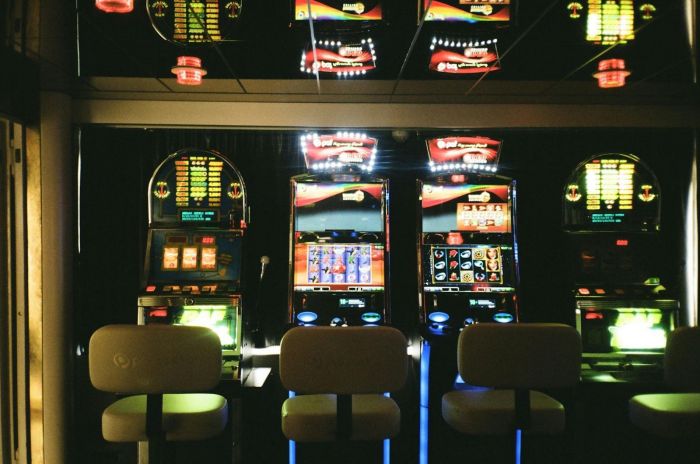Tips & Tricks
5 min read
How $1 Casinos Are Redefining Access in the NZ Market


New Zealand's iGaming environment is undergoing a stealth revolution: a one founded on micro–bankrolls and not mega–jackpots. An expanding level of sites now allows Kiwis to spin the reels or bet a hand of blackjack for the cost of a flat white, and Minimumdepositcasinos.org is attracting record search traffic with its list of $1 deposit casinos for New Zealand players.
Indicative of more than a marketing fad, it is transforming how operators acquire customers, how regulators view harm minimization, and how casual audiences view online wagering.

Official statistics estimate Aotearoa's annual gambling spend at around NZ $3.1 billion, or 15 percent higher over five years, and have experts forecasting the total market to reach NZ $3.2 billion by 2026. The estimated average individual loss is NZ $1,107 per annum, highlighting both the mass market appeal and the social responsibility implications of the industry.
Micro-deposit brands cater to both facts: they access a surging player base while limiting financial risk to single-digit amounts.
New Zealand's Gambling Act continues to prohibit domestic operators from operating online casinos, but citizens can play on offshore sites legally. The Department of Internal Affairs recently reaffirmed that numerous offshore sites now register for GST and pay a gambling duty, although they continue to be technically "unlicensed."
This halfway house offers fertile ground for small-stake players: the compliance costs continue to be low, and officials praise any device that limits potential harm per session.
Customer-acquisition expenses in iGaming range between NZ $150 and NZ $300 per funded player. Micro-deposit promotions narrow that margin by generating conversions from low-friction "test drives."
Rather than persuading a novice to surrender a NZ $50 signup, operators reap thousands of $1 beginners and cultivate lifetime value with loyalty programs, free-spin ladders, and incremental up-charges via POLi, Apple Pay, and instant banking transfer.
Payment processors are also winners. Transaction fees on a NZ $1 top-up may seem trivial, but in aggregate volume, thin margins are made up, and processors have a long-tail customer base that would never venture near a conventional $20 gateway.
Recent accountancy reinforces the micro-deposit surge's strategic rationale. SkyCity Entertainment recorded a 5 percent year-over-year revenue decline to NZ $422 million in the half-year to December 2024, attributing "lower spend per visit" to this as well as redoubled responsible-gaming initiatives.
Small-stakes competition has drained some high-roller activity, but it also widens the top of the funnel, maintaining visitor volume even when spend tapers off.
Complementing SkyCity’s bricks-and-mortar softness, quarterly GMP (gross machine profit) for gaming machines nationwide slipped 2 percent in late 2024, mirroring the same “spend-light, play-often” dynamic.
For regulators looking to balance tax revenue against public-health imperatives, $1 venues act as a pressure valve, redirecting riskier habits toward capped-loss environments.
Gen Z and younger millennials (digitally native, mobile-first, wary of large upfront costs) are particularly responsive to $1 gateways. The model dovetails with subscription-era psychology: the initial commitment feels trivial, and repeat engagement relies on value-for-money perceptions rather than sunk cost.
Operators entice retention with daily missions, bite-sized jackpot pools, and tiered VIP points that earn even on micro-bets. Since spend limits are low, social sharing has little stigma; players share bankroll screenshots as naturally as Wordle scores, driving organic reach bought once by heavyweight brands in the form of billboard budgets.
Harm-minimisation organisations have long contended that the high minimum stakes exacerbate problem gambling. By making an entry $1, sites can then assert credible conformity with safer-play ideals, albeit with critics cautioning that volumetric play (hundreds of micro bets) remains likely to escalate losses.
New AI-assisted monitoring technology now identifies frantic $1-staking as easily as it does the telltale $500 spikes, and allows for real-time interventions through cooling-off reminders and lock-outs on deposits.
The Department of Internal Affairs has hinted that forthcoming reforms will prioritise affordability checks over blanket stake limits, a framework ideally suited to micro-deposit ecosystems.
What began as a promotional hook is maturing into an industry fixture. Expect to see:
Executives warn that a bottom-up price war would burn margins, but carefully crafted pricing tiers ($1 trial, $5 standard, $20 VIP) achieve revenue cannibalization while maintaining mass-market appeal.
A decade ago, Kiwi players judged online casinos by bonus size and slot catalogue. In 2025, the first metric is entry cost, and $1 is the new gold standard. By lowering the barrier to a casual coin toss, micro-deposit operators widen participation, court younger demographics, and offer regulators a lower-risk path to channel offshore play into transparent tax lanes.
Whether measured in retention rates, optics on compliance, or sheer signup velocity, $1 casinos are no longer the novelty they used to be but rather the blueprint for sustainable growth in New Zealand's evolving iGaming economy.
Be the first to post comment!